Co Chairs
Carol Johnson
NIST, USA
carol.johnson@nist.gov
Giuseppe Zibordi
giuseppe.zibordi@eoscience.eu
Zibordi et al. (2025) System Vicarious Calibration for Climate and Global Long-Term Operational Ocean Color Applications, Bulletin of the American Meteorological Society https://doi.org/10.1175/BAMS-D-24-0085.1
IOCCG-26 Committee Meeting, 27 June 2022, ESRIN, Italy
IOCCG-25 Committee Meeting, 4 May 2021, Virtual
Brief Summary Report of Workshop, 2-3 Dec 2013, ESRIN, Italy
Background
Ocean colour system vicarious calibration (OC-SVC) is a fundamental requirement for all ocean colour missions in order to meet the stringent accuracy requirements for radiometric products and all downstream bio-optical products. OC-SVC infrastructures are important for space agencies who aim to maintain or establish new infrastructures, e.g., NOAA MOBY, NASA PACE, ESA Boussole, FRM4SOC etc. OC-SVC are highly specialized and very expensive so it is useful to have coordination across the agencies for lessons learned and methodologies.
This group used to be an IOCCG working group on Long-term vicarious adjustment of OC sensors. In 2020 IOCCG recommended the establishment of the OC-SVC Task Force, supported by a recommendation from the INSITU-OCR White Paper. The task force was established in May 2021. Initial membership was based on agency members as well as other members who were previously engaged in the previous working group.
Members
- Aga Bialek (NPL)
- Andrew Barnard (Oregon State Uni.)
- Brian Barnes (USF)
- Bryan Franz (NASA)
- Robert Frouin (UCSD)
- Constant Mazeran (SOLVO)
- David Antoine (Curtin Uni.)
- Ewa Kwiatkowska (EUMETSAT)
- Fréderic Melin (JRC)
- Jee-Eun Min (UST21)
- Hiroshi Murakami (JAXA)
- K. N. Babu (ISRO)
- Ken Voss (U. Miami)
- Marie-Helene Rio (ESA)
- Menghua Wang (NOAA)
- Shuguo Chen (OUC)
- Susanne Craig (NASA)
- Young-Je Park (KIOST)
- Taeho Kim (UST21)
Terms of Reference
Support the recommendations from INSITU-OCR White Paper:
- Maintain at least one long-term vicarious calibration site with SI traceable radiometry pursuing the objective of producing and delivering highly accurate measurements collected under ideal measurement condition (e.g., spatial homogeneity, known aerosol and marine optical properties) in a region representative of global ocean observations. Multiple sites are encouraged, but their equivalence in performance is fundamental.
- It is essential that a rigorous metrology be established at each measurement site in view of assuring measurement traceability. Because of this, inter-comparisons of each relevant component of the vicarious calibration process should be encouraged and differences thoroughly investigated. Within such a context the adoption of a commonly agreed vicarious calibration approach, supported by sharing of processing modules, would enhance inter-mission consistency of radiometric products.
- Vicarious calibration should be reassessed whenever the instrument calibration or OCR retrieval algorithm is modified, and uncertainties on the derived gains should also be reported to support the determination of OCR uncertainties.
OC-SVC Task Force Workshop
The OC-SVC Task Force Workshop, scheduled for 18-19 November 2023 in St. Petersburg, FL, aims at producing a White-paper streamlining essential requirements for comprehensive SVC infrastructures accounting for current and future needs. The workshop will look for consensus on the following key topics: radiometric uncertainty requirements for field measurements supporting SVC; spectral requirements for field measurements supporting SVC; site requirements for SVC; field infrastructure requirements for SVC; handling and processing of SVC field data; determination of satellite SVC correction factors (i.e., g-factor); impact of g-factors on data products; impact of spectral resolution on g-factors; handling of g-factors from multiple SVC sites; benefits from extending SVC to the near-infrared spectral region; building time-series from independent missions including the historical ones.
The workshop will largely rely on round table discussions with time limits on each key topic. Short presentations (restricted to one, maximum two slides) for each key topic will be possible.
Workshop on OC-SVC for Science & Operational Missions
Welcome – Ewa Kwiatkowska (Chair, EUMETSAT)
Session 1: Current status
VIS vcal site and source characterization, uncertainties
Vical application in ocean colour processing (NIR and VIS vcal, sites, sources, protocols, implementation in the processing chain)
- NASA (Bryan Franz)
- KOSC/KIOST (Seongick Cho)
- ISRO (Ashok Shukla)
- ESA (Constant Mazeran)
Remaining uncertainties
- Analysis of current biases among missions (Fred Melin)
- Impact of instrument calibration and instrument characterization, pre-launch and on-orbit (Gerhard Meister)
- Results from other statistical techniques (Bertrand Fougnie)
Session 2: NIR methodology and recommendations towards standardization
- NIR vcal methodology: black pixel assumption, atmospheric model, aerosol spectral slope, band assumptions (Jean-Paul Huot)
- SWIR vcal (Menghua Wang )
- Role of aerosol measurements (Ewa Kwiatkowska)
Session 3: VIS methodology and recommendations towards standardization
- Vcal requirements for OCR-VC, standardization, data policy (Menghua Wang)
- VIS vcal requirements on in situ data sources, site requirements, site selection, data quality (Giuseppe Zibordi)
- Vcal regional specifics (Seongick Cho )
Session 4: Operational mission needs
- Vcal requirements for operational services, how to achieve operational status early (Ewa Kwiatkowska)
- NIR vcal approach early in the mission: sites, data quality, targeted satellite acquisitions (Jean-Paul Huot)
- VIS vcal approach early in the mission: sites, data quality, targeted satellite acquisitions (Menghua Wang)
Session 5: Advancing as a community: vision for the future of vicarious calibration and international cooperation
- Funding and upgrading of existing vcal infrastructure (Ken Voss)
- Vision for the future of vcal, concepts for instrumentation, infrastructure, site locations (David Antoine)
- International cooperation, coordination, and data sharing (Seongick Cho, Ashok Shukla, Menghua Wang, Bryan Franz, Philippe)


 The sixth International Ocean Colour Science (IOCS) meeting will take place in Darmstadt, Germany from 1 – 4 December 2025, hosted by EUMETSAT and ESA with support from other agencies.
The sixth International Ocean Colour Science (IOCS) meeting will take place in Darmstadt, Germany from 1 – 4 December 2025, hosted by EUMETSAT and ESA with support from other agencies.